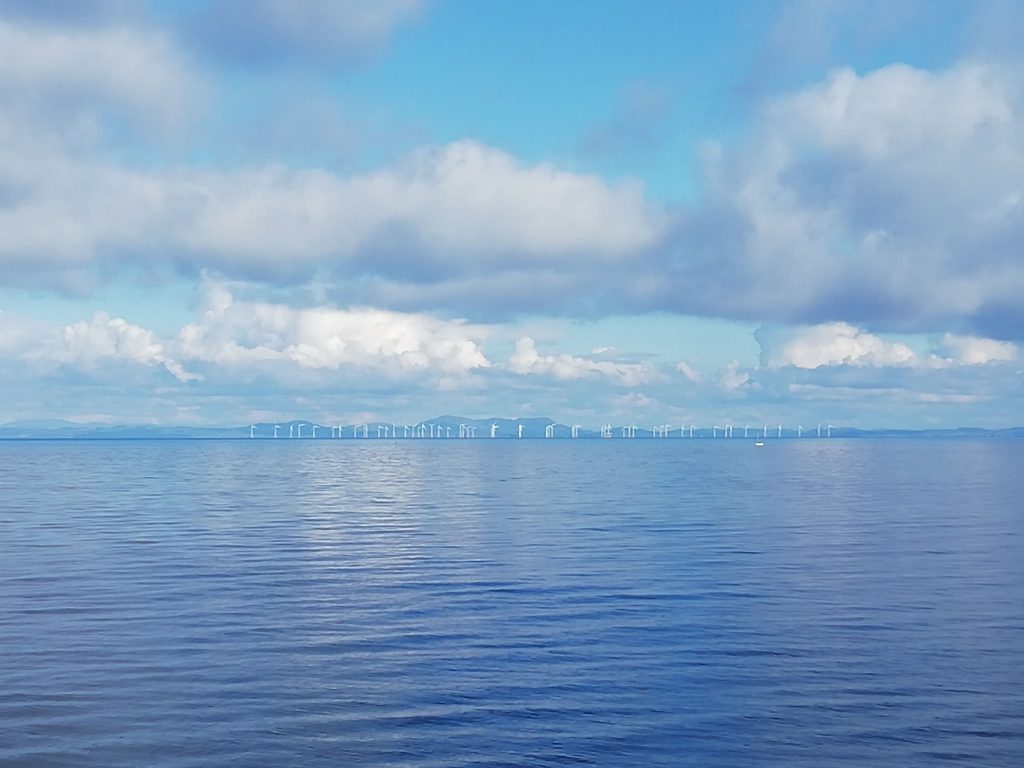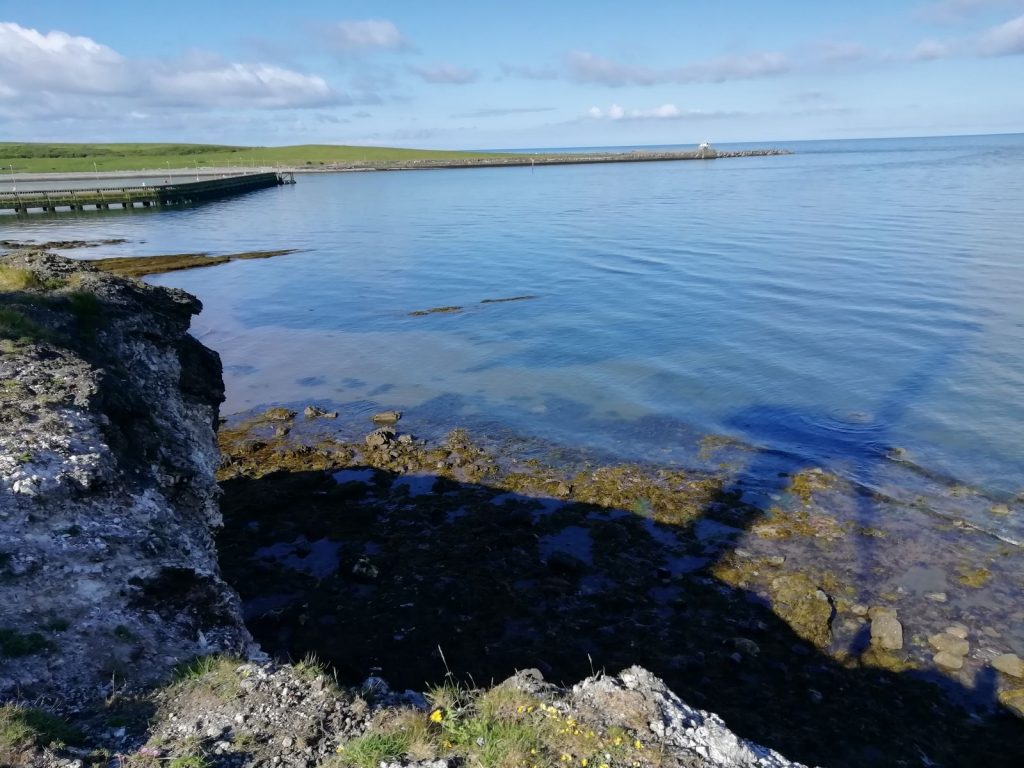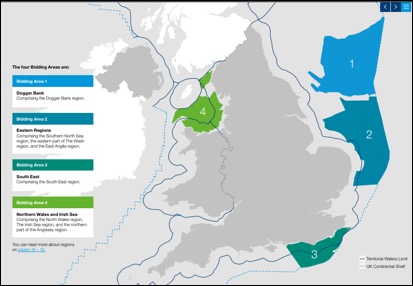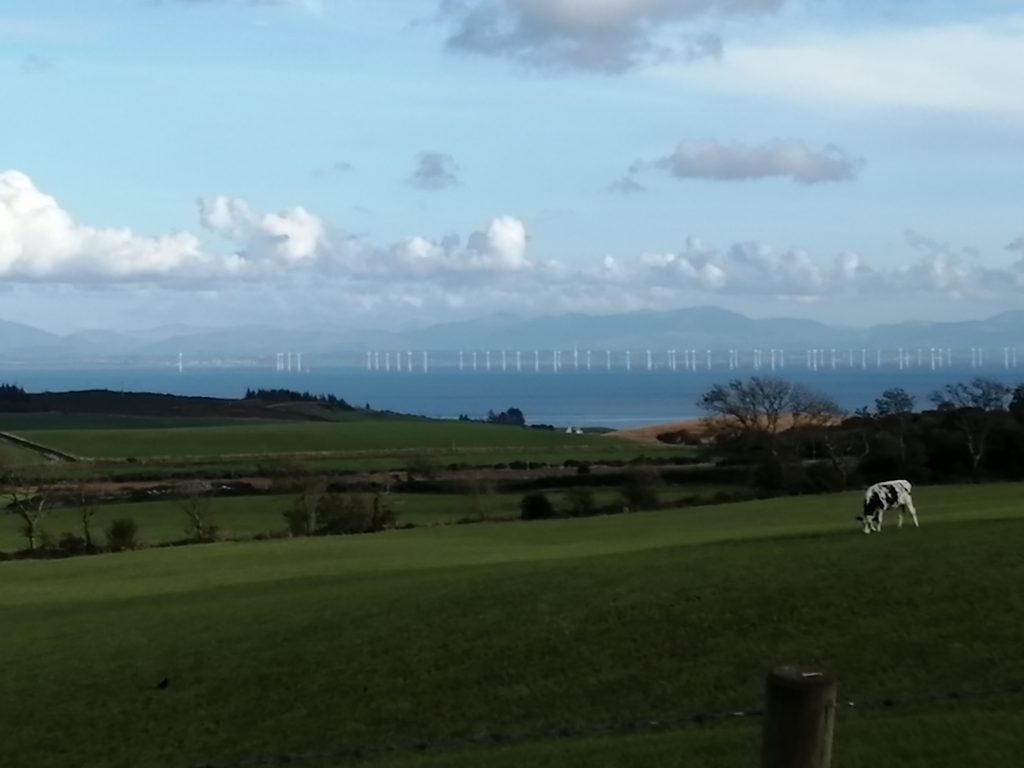Energy, aggregates, subsea cables and pipelines
Scotland - Renewable Energy
Offshore Wind
The only currently operational offshore wind sites in the Solway Firth are Robin Rigg East and Robin Rigg West owned and operated by RWE. Both sites are of broadly similar size. The turbines had an installed combined generating capacity of 180MW, however there were 60 turbines installed originally. In 2015, two turbines had to be removed as they had become unstable and therefore the generating capacity is now 172MW due to the removal of two turbines each 3MW capacity. By the end of 2016 work had been completed on the remaining turbines to ensure that the turbines will remain operational for the foreseeable future.
Robin Rigg has a variety of local opinions, some locals mention the impact on the Landscape/seascape and cite concerns with interaction with tourism and coastal view. It has been referred to as an excellent navigational tool, indicating the exact location within the Solway, especially given the fact that it is lit up day and night and is visible in most weather unless very adverse conditions. There are often concerns over habitat loss or damage due to the construction phase of offshore renewable energy installations, however structures, such as the Robin Rigg wind farm, have the potential to form artificial reefs free to be colonised by a variety of marine organisms.
The operations and maintenance base for Robin Rigg are based in England, located at the port of Workington, with the grid connection slightly further north near Seaton. There is therefore no direct economic activity associated with Robin Rigg in Dumfries & Galloway.
A community benefit fund was established when the farm was installed. This covered six community councils on the Dumfries and Galloway Solway Coast and a number of communities on the Cumbrian Solway. It initially ran for a ten year period ending in 2020 with £120,000 of funding available per annum. This fund has been used to fund a wide variety of projects such as regenerating parks, renovating village halls, etc.
A new fund has recently been established for coastal communities from Borgue to Caerlaverock in Dumfries and Galloway and from Silloth on Solway to St Bees in Cumbria. The Robin Rigg Community Fund, initially running for three years to 2022 with funding of £130,000 per annum, which is being administered by Solway Firth Partnership.
In addition to this, Robin Rigg provide £8,000 per year to Solway Firth Partnership to produce Tidelines Magazine, a bi-annual publication providing a variety of information and articles on the Scottish and English sides of the Solway and including the Round Robin Newsletter and available at a variety of locations including library’s and visitor centres.
There are currently no publicly available plans to develop further offshore wind sites in the Solway Firth. However, it is worth noting that an area of the Scottish Solway outside Luce Bay has also been outlined in the Draft sectoral marine plan for offshore wind energy 2019 as suitable for future commercial wind farm development. This area is referred to as Draft Plan Option (DPO) SW1. A new offshore wind leasing round was launched by Scottish Crown Estate in June 2020. ScotWind leasing has (as of August 2020) published Clarifications documents from over 800 requests, and will publish the Post Adoption Addendum following the adoption of Scotland’s draft Sectoral Marine Plan for Offshore Wind Energy. It is worth noting that stakeholders were very active in their involvement in the consultation on the Draft Sectoral Marine Plan for Offshore Wind Energy in relation to the SW1 site comparative to other DPO sites. The consultation analysis highlighted that SW1 (the proposed site located in the Scottish Solway) received the most responses to the question ‘Do you support the selection of the following Draft Plan Options?’ While other DPOs received between 97 and 102 responses, the number of responses relating to SW1 was 400. Furthermore, other DPOs received a support rate of between 34% and 41% whereas SW1 received a support rate of only 10%, with 82% opposition rate, and 9% neither supporting or opposing (Scottish Government, 2020). This DPO SW1 was dropped from the final Sectoral marine plan for offshore wind energy, and therefore is not outlined as a Final plan option. Strong opposition from stakeholders and a variety of concerns (such as the potential level of socio-economic benefit to the region, negative bird, seascape and cumulative impacts) were raised during consultation of the Draft plan, and NatureScot Supplementary Advice on seascape and visual impacts were all highlighted as reasons why the Scottish Ministers decided not to progress the SW1 DPO at present.
Marine Scotland held in-person consultation events in Stranraer, Newton Stewart and Kirkcudbright to gauge public opinion on the development of the offshore wind leasing site in the Solway.
Tidal Energy
The Solway Firth has considerable potential for tidal energy generation, with Luce bay identified as a draft option for tidal energy development in the Draft Sectoral Marine Plans for Offshore Wind Wave and Tidal 2013, see map opposite.
An agreement/option to lease is held by Marine Current Turbines Ltd (part of SIMEC Atlantis Energy) near the Mull of Galloway for a potential tidal farm. A 2017 paper suggested that this project is ‘in development’ and could have a capacity of 30MW (Neill et al, 2017) but there is little other information on this site.
Whilst there are currently no approved plans for tidal energy generation, there have been a number of proposals, see below.
1. Solway Energy Gateway
Solway Energy Gateway is a proposed tidal energy generation scheme that plans to create an “electric bridge” between Annan and Bowness-on-Solway at the site of a former rail bridge, the Solway Viaduct, which was demolished in 1933.
Unlike some other tidal energy schemes, this project will not rely upon the creation of a tidal lagoon, generating energy solely based on tidal flow. It is estimated to have a generation capacity of around 100 MW, enough to provide power to around 60,000 homes.
Furthermore, it will create a pedestrian and cycle link between Scotland and England, benefiting local communities, and has the potential to become a tourist attraction.
However, there is considerable uncertainty around this project. The project website estimates that that construction could have started in 2018, yet current estimates put this at 2025 at the earliest, subject to receiving all necessary consents and attracting the considerable finance that this project would require.
2. Solway Estuary Tidal Gateway
The Solway Estuary Tidal Gateway is a proposal by North West Energy Squared (NWE2) involving the construction of a bridge linking Kirkcudbright and Workington with tidal turbines spanning the full length. This is part of a wider £12 billion proposal for six similar structures in estuaries in Wales and the North West of England (The Times, 2015).
It is estimated that this scheme could potentially generate 8.44TWh annually, enough to power in the region of 2 million homes, reduce travel time from Workington to Kirkcudbright by more than an hour, potentially boosting regional tourism, and could also help to mitigate flood risk in a particularly flood prone coastal region of the country.
It is estimated that after a two year preparatory period beginning in 2022, construction would take seven years, and as with the Solway Energy Gateway, this would be subject to obtaining consents and funding.
The current status of this project is unclear, with no new information since 2015 and the NWE2 website no longer available.
3. Tidal Electric Offshore Lagoon
An offshore tidal Lagoon is proposed in the Solway Firth by a consortium consisting of Tidal Electric, Ecotricity and DEME. The project would consist of one or two offshore tidal lagoons that would be constructed from rubble or rock armour in the Solway Firth with turbines to generate electricity. It has the potential to generate 600GWh annually and will cost in the region of £650m.
This would reportedly have a number of advantages over onshore lagoons and tidal barrages, including reduced impact on wildlife (with migratory fish not being required to swim through turbines) and the environment (with a low impact on the inter-tidal zone), greater efficiency and lower costs.
As the with the other tidal power proposals, the project is currently in a very early stage of development, but could be up and running by 2026 should necessary consents and financing be secured.
Image; Scotland’s National Marine Plan Interactive, with layers (links will provide usage licence, data provider, etc); ‘Solway Region (mask)‘ © Crown Copyright, All rights reserved, ‘Tidal Lease Sites – Crown Estate Scotland – June 2019‘ © Crown Copyright, All rights reserved. Contains information from the Crown Estate Scotland licensed under the Open Government Licence v3.0, ‘Sectoral Marine Plan (SMP) – Tidal Draft Plan Options (2013)‘ © Crown Copyright, All rights reserved.
























